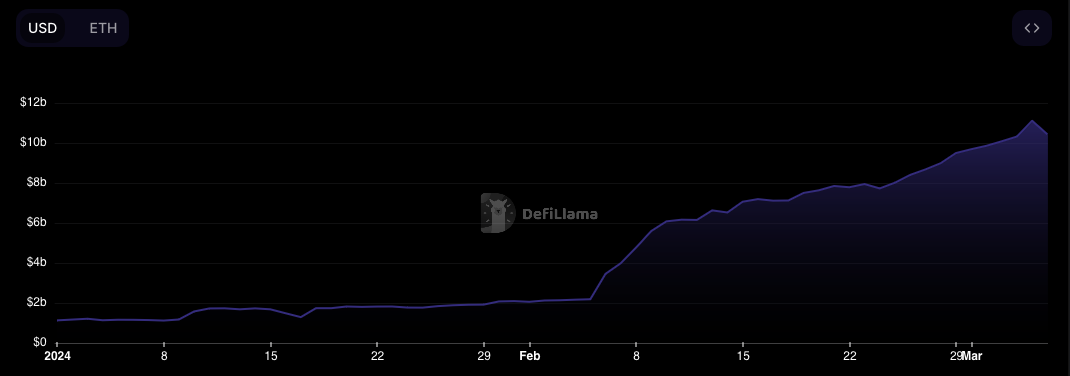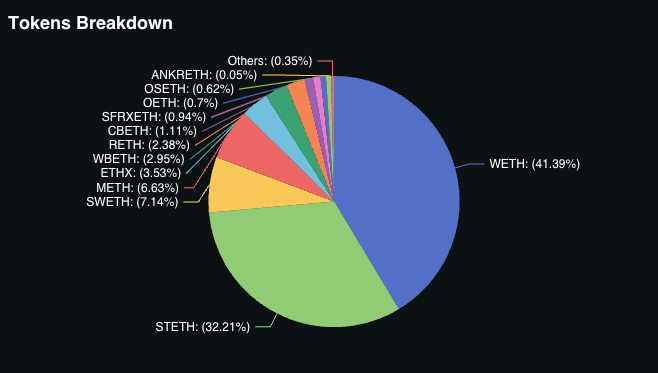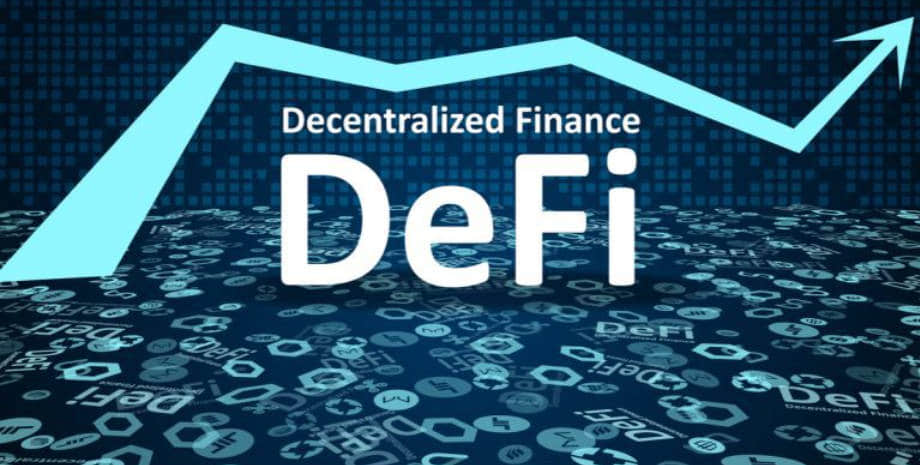EigenLayer’s restaking protocol surpasses Aave with a total locked value of $10.4B.
The Ethereum restaking protocol, EigenLayer, surpasses lending platform Aave in terms of value locked, making it the second-largest DeFi protocol.Title: Ethereum Staking Protocol EigenLayer Overtakes Aave in TVL: The Rise of Restaking and the Controversy Surrounding It
📷  EigenLayer started 2024 with $1.1 billion TVL and has seen an 844.6% year-to-date growth Source: DefiLlama
EigenLayer started 2024 with $1.1 billion TVL and has seen an 844.6% year-to-date growth Source: DefiLlama
In the world of decentralized finance (DeFi), trends change rapidly. One such trend that has been gaining momentum is restaking, and Ethereum staking protocol EigenLayer has capitalized on this phenomenon, surpassing lending protocol Aave in total value locked (TVL). With $10.4 billion worth of crypto committed to the protocol, EigenLayer has become the second-largest DeFi protocol, trailing only behind staking giant Lido.
Restaking protocols like EigenLayer and its smaller rival, the Octopus Network, allow users to restake their already staking-derived tokens, such as Lido Staked ETH (stETH), which is provided to those staking Ether (ETH) on Lido. This practice has sparked controversy, with some Ethereum developers warning about the creation of excessive leverage. However, proponents argue that restaking can provide extra rewards for those who have already staked their ETH.
EigenLayer’s TVL has experienced remarkable growth, starting at $1.1 billion at the beginning of 2024 and reaching an all-time high of $11 billion on March 5, surpassing Aave’s TVL of $10.7 billion. Despite a slight drop in TVL for both EigenLayer and Aave, with the former currently at $10.4 billion and the latter at $10.35 billion, EigenLayer’s ascent represents a significant shift in the DeFi landscape.
- Centralized Crypto Exchanges Experience Outages Due to Algorithmic Trading Firms 🚀💥
- Metropolis: Blending Commerce, Avatars, and Gaming in the Digital World
- 🚀 The Big Bang DeFi Recovery: A Promising Future for Decentralized Finance
📷  Wrapped Ether (WETH) makes up just over 41% of tokens locked on EigenLayer, while stETH accounts for just over 30%. Source: DefiLlama
Wrapped Ether (WETH) makes up just over 41% of tokens locked on EigenLayer, while stETH accounts for just over 30%. Source: DefiLlama
The rise of EigenLayer and other restaking protocols highlights the growing popularity of this method among crypto enthusiasts. Dune Analytics data reveals that EigenLayer has over 115,000 unique depositors, and according to DefiLlama, 74% of staked tokens are Wrapped Ether (wETH) and stETH. In comparison, Aave has over 5,700 daily active users, while Lido trails behind with fewer than 430, as reported by Token Terminal.
Despite its success, EigenLayer’s flip of Aave has raised questions about how restaking TVL is calculated. In a March 5 post on Twitter, Austin Federa, the head of strategy at Solana Foundation, challenged the inclusion of restaking-derived assets like stETH in TVL calculations. He argued that since their value is technically locked on another protocol, they should not be counted in TVL.
The clash between EigenLayer and Aave showcases the evolving nature of the DeFi ecosystem and the different perspectives within the industry. While EigenLayer has attracted attention with its impressive growth and restaking model, Aave has faced its own challenges. Recently, the lending protocol lost its long-time risk manager, Gauntlet, due to difficulties in navigating inconsistent guidelines and unwritten objectives of its largest stakeholders. Gauntlet’s departure came just two months after signing a $1.6 million contract with Aave and subsequently partnering with rival DeFi lending protocol Morpho.
🔍 Q&A: Exploring Restaking and its Implications
Q: What is restaking, and how does it work? A: Restaking allows users to stake their already staked tokens, such as stETH, for additional rewards. It involves reinvesting existing staking-derived assets to maximize returns.
Q: Why is restaking controversial? A: Restaking has stirred controversy as some industry insiders believe it introduces excessive leverage and may lead to potential risks. Critics argue that it may not align with the original intent of staking.
Q: What advantages does restaking offer? A: Restaking enables users to earn extra rewards on top of their initial staking yield. It incentivizes long-term participation and can be especially beneficial for those who believe in the long-term value of the staked assets.
Q: How does EigenLayer’s TVL compare to other DeFi protocols? A: EigenLayer has become the second-largest DeFi protocol by TVL, trailing only behind Lido. Its rapid growth and the adoption of restaking have propelled it ahead of established protocols like Aave.
The rise of restaking protocols indicates a shift in the DeFi landscape, with users increasingly seeking ways to maximize their earnings. While these protocols offer opportunities for additional rewards, it’s essential to consider the potential risks associated with restaking.
🔮 Future Outlook and Investment Recommendations
As the DeFi ecosystem continues to evolve, restaking protocols like EigenLayer are expected to attract further attention and potentially disrupt traditional lending protocols. The ability to earn additional rewards from already staked assets provides a compelling incentive for crypto enthusiasts.
Investors should carefully monitor the developments in restaking and keep an eye on the evolving regulatory landscape. Additionally, diversifying investments across different DeFi protocols can help mitigate risks and maximize potential returns. With the rising popularity of restaking, it’s crucial to stay informed and adapt investment strategies accordingly.
📚 References: 1. EigenLayer’s TVL surpasses Aave: source 2. The controversy surrounding restaking: source 3. EigenLayer’s growth and TVL increase: source 4. Austin Federa’s challenge to restaking TVL calculation: source 5. Token Terminal data on Aave’s daily active users: source 6. The departure of Gauntlet from Aave: source 7. Information on restaking protocols in DeFi: source 8. The future outlook and investment recommendations in the DeFi ecosystem: source
Enjoyed this article? Share it with your friends and colleagues! Don’t forget to follow us for more exciting updates on the world of blockchain and DeFi! 😄✨
We will continue to update Blocking; if you have any questions or suggestions, please contact us!
Was this article helpful?
93 out of 132 found this helpful
Related articles
- CoinGecko Launches New Feature to Access On-Chain Data from Decentralized Exchanges (DEXs)
- The Super Bowl of Crypto: Insights from ETHDenver Founder
- Gauntlet Joins Morpho: A Paradigm Shift in Decentralized Finance (DeFi) Lending
- Solana Network: Outages, Bugs, and the Mainnet “Beta” Saga
- PancakeSwap unveils an ‘Affiliate’ program to support forking across different blockchains.
- Cardano’s Indigo v2 Upgrade: A New Era for Synthetic Assets
- Blueberry Protocol Faces Exploit Attack: Users Advised to Withdraw Funds






